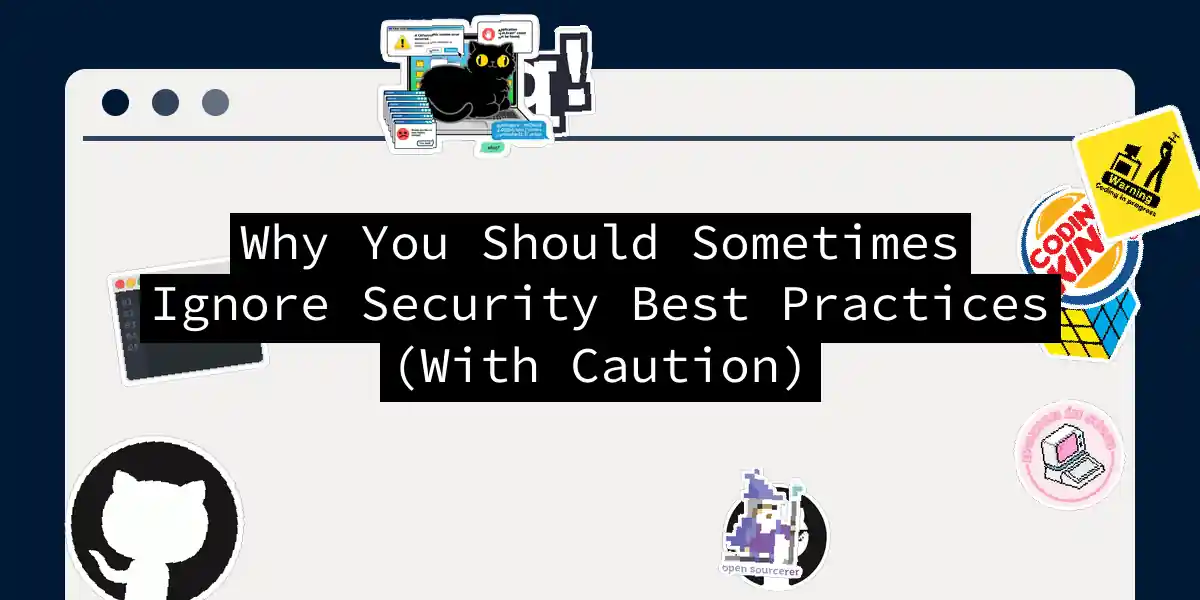Introduction to the Dilemma
In the world of software development, security is often touted as the holy grail. We’re constantly reminded that security should be baked into every stage of the development lifecycle, from design to deployment. However, there are times when following security best practices to the letter can hinder progress, increase costs, or even lead to unnecessary complexity. This article explores the scenarios where it might be beneficial to deviate from the standard security playbook, but with caution.
The Speed vs. Security Conundrum
In today’s fast-paced digital landscape, speed to market is often a critical factor for success. Companies that can quickly adapt and deploy new features have a competitive edge. However, this rush to market can sometimes clash with the rigorous security protocols that are essential for protecting user data and preventing breaches.
The Cost of Over-Securing
Embedding security into every aspect of software development is crucial, but it can also be costly. Implementing advanced security measures can delay product launches and increase development costs. For startups or small businesses with limited resources, these costs can be prohibitive.
Example: Over-Securing a Simple Web App
Consider a simple web application that doesn’t handle sensitive user data. Implementing full-scale security measures like multifactor authentication and advanced encryption might not be necessary, especially if it delays the launch by several months. In such cases, a more balanced approach might be more appropriate.
When to Ignore Security Best Practices
1. Proof of Concept (PoC) Development
During the early stages of development, particularly when creating a proof of concept, it might be more efficient to focus on functionality rather than security. Once the concept is proven and the project moves forward, security can be integrated more thoroughly.
2. Rapid Prototyping
In agile development environments, rapid prototyping is essential for testing ideas quickly. Overly strict adherence to security protocols can slow down this process. Instead, focus on getting the prototype working, and then iterate on security as needed.
3. Legacy Systems with Limited Resources
For legacy systems with limited resources or outdated infrastructure, applying modern security standards might not be feasible. In such cases, prioritizing the most critical vulnerabilities and gradually improving security over time might be a more practical approach.
How to Ignore Security Best Practices Safely
Ignoring security best practices should always be done with caution and a clear understanding of the risks involved. Here are some guidelines to help you navigate this process safely:
1. Risk Assessment
Before deciding to bypass any security measures, conduct a thorough risk assessment. Identify potential vulnerabilities and weigh them against the benefits of faster development or reduced costs.
2. Prioritize Critical Security Measures
Even if you can’t implement every security best practice, prioritize the most critical ones. For example, ensure that user data is encrypted and that basic authentication mechanisms are in place.
3. Iterative Security Improvement
Plan for iterative security improvements. As resources become available or as the project progresses, revisit and enhance security measures.
4. Documentation and Transparency
Document any deviations from security best practices and communicate them clearly to stakeholders. Transparency about security risks can help manage expectations and build trust.
Example: Iterative Security Improvement
Let’s consider a scenario where a startup is developing a new mobile app. Initially, they focus on getting the app to market quickly, implementing only basic security measures. As the app gains traction and more resources become available, they can then enhance security features iteratively.
Conclusion
While security should always be a top priority in software development, there are scenarios where deviating from best practices can be beneficial. By understanding when and how to safely ignore certain security measures, developers can balance speed with security, ensuring that their products are both competitive and secure. Remember, security is not a one-size-fits-all solution; it requires flexibility and a deep understanding of the project’s specific needs and constraints.
